Marketing Analysis: Nescafe Print Ad, Creative Strategies and Impact
VerifiedAdded on 2022/09/21
|5
|537
|23
Report
AI Summary
This report analyzes a Nescafe print advertisement, focusing on the creative and marketing strategies employed. The analysis highlights the effectiveness of the ad's tagline, "De-stress, de-caf and de-licious," in attracting consumer attention and influencing purchasing behavior. The report emphasizes the ad's ability to resonate emotionally with the target audience, communicating the benefits of the product and influencing consumer mindsets. It also discusses the use of memorable devices to enhance brand recall. The report suggests including the product's price for a more comprehensive understanding of the brand's pricing strategy. The report references Ashley and Tuten (2015) and Fransen et al. (2015) to support the analysis of creative strategies and consumer resistance to advertising.
1 out of 5
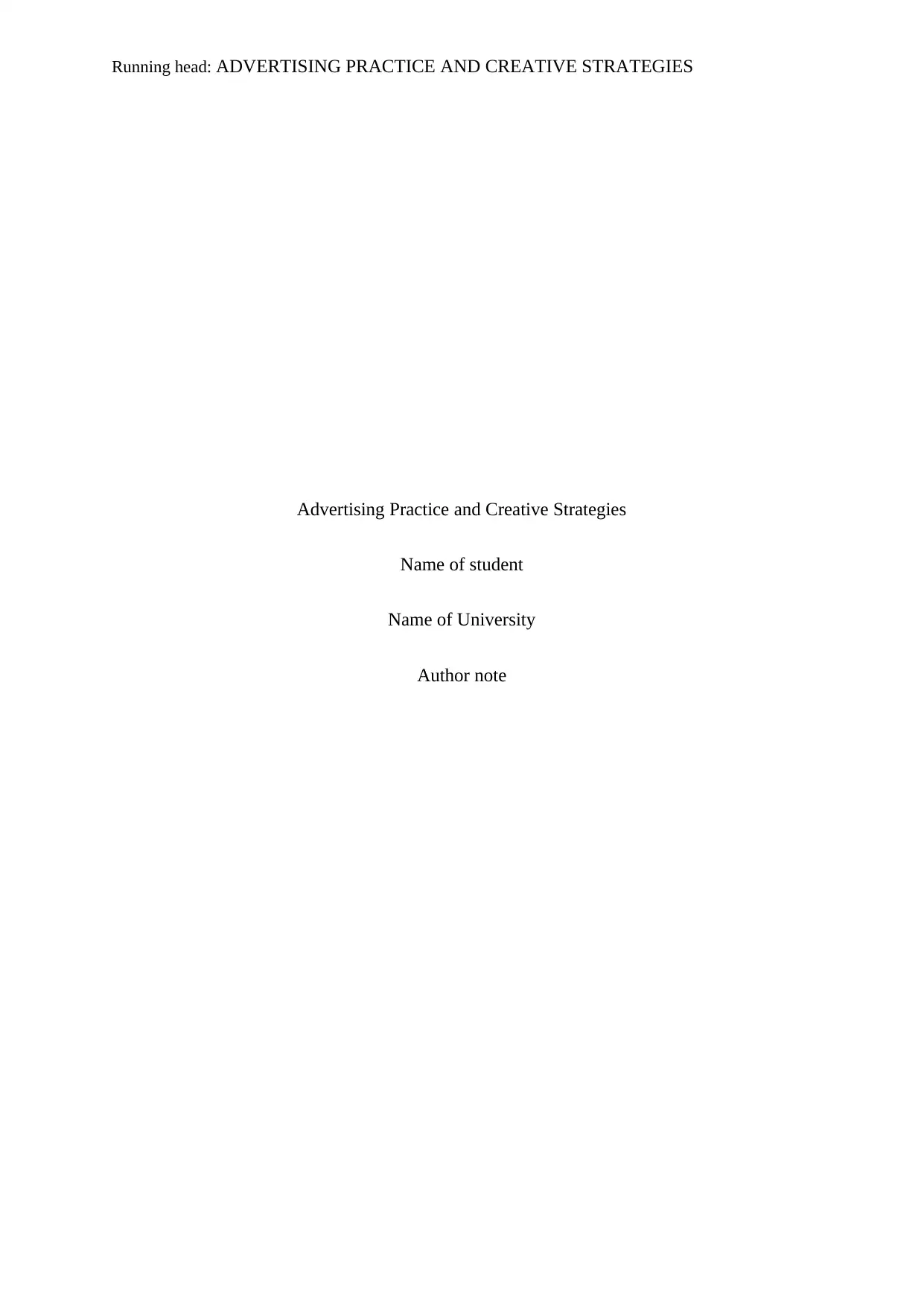
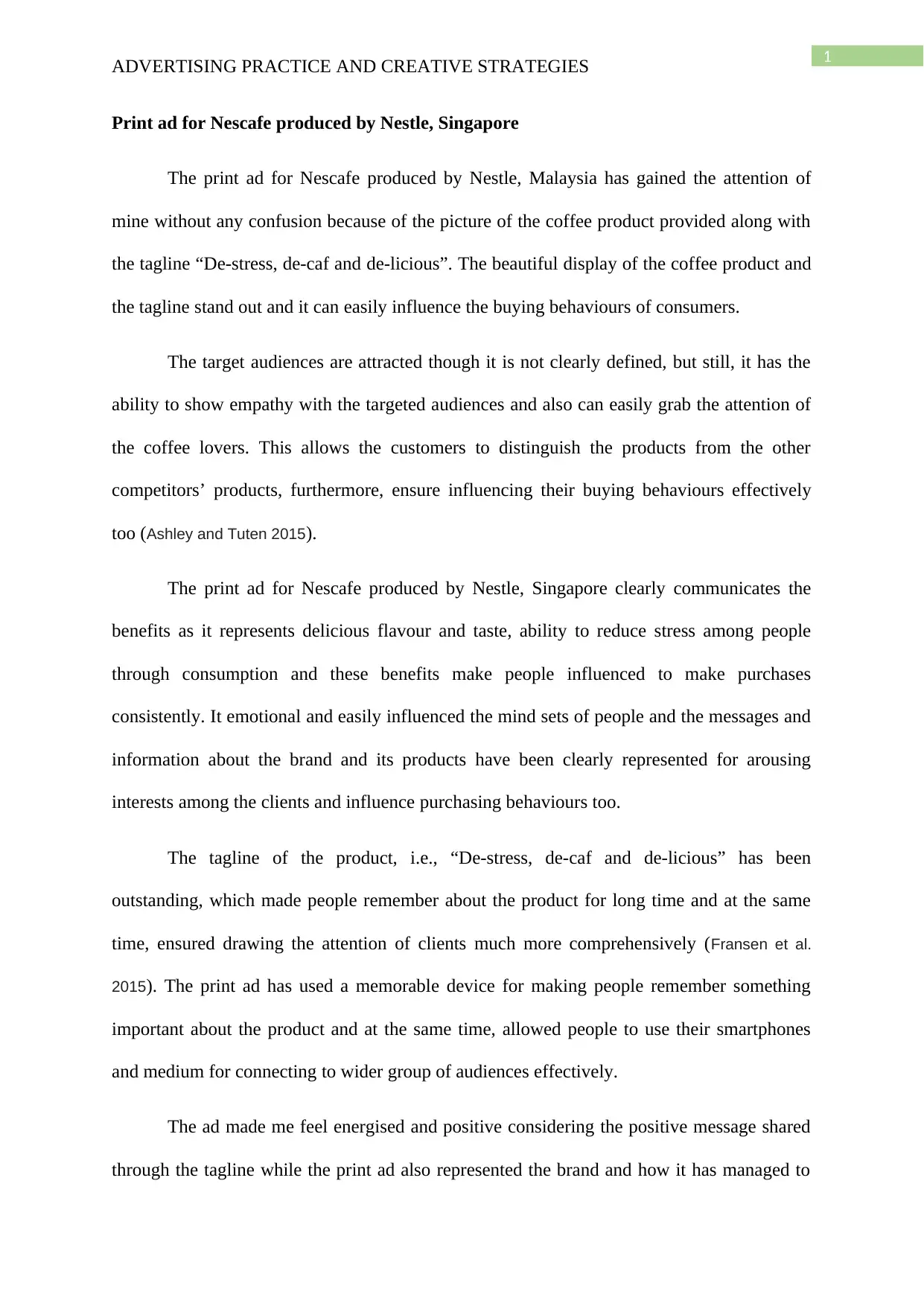
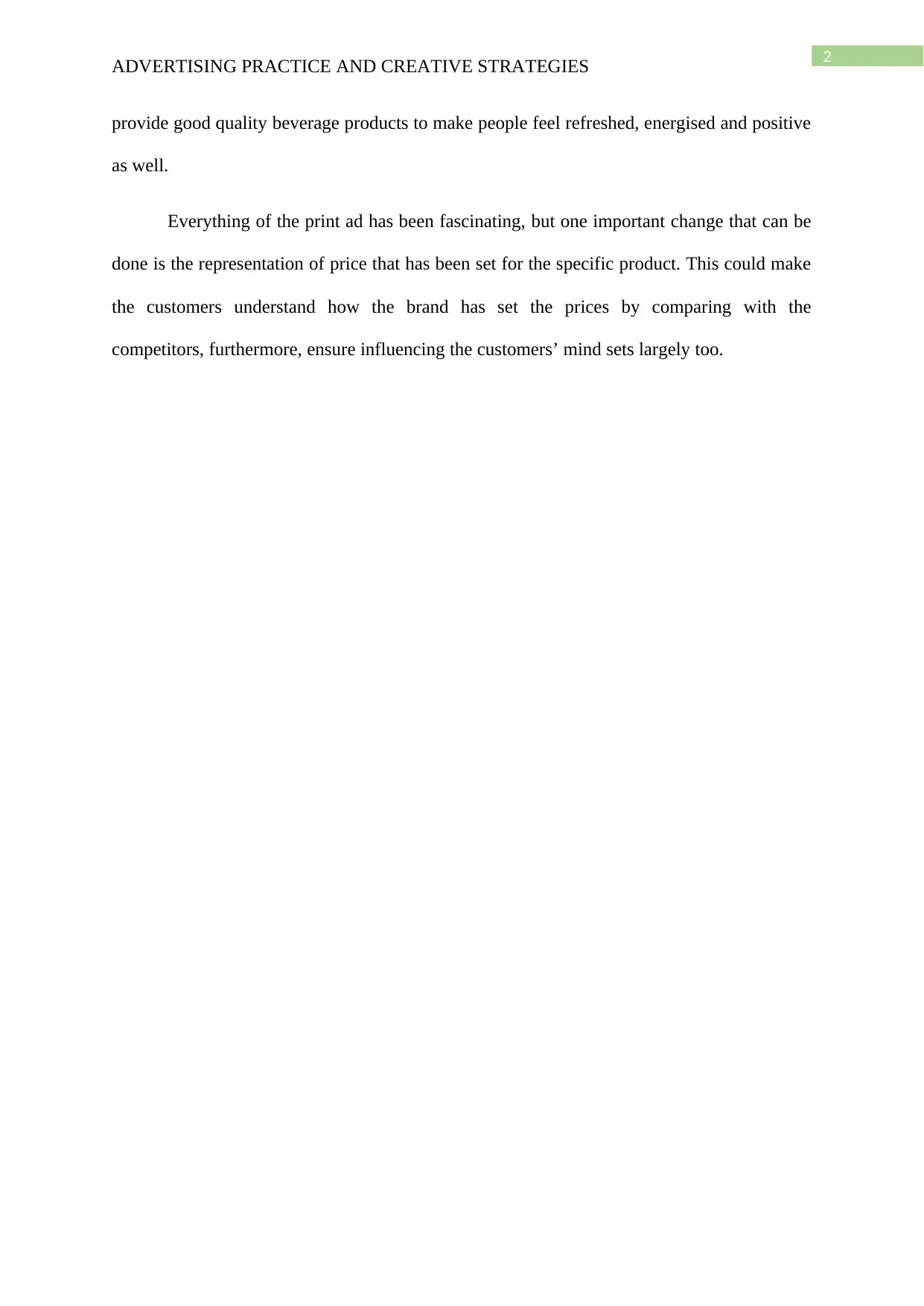

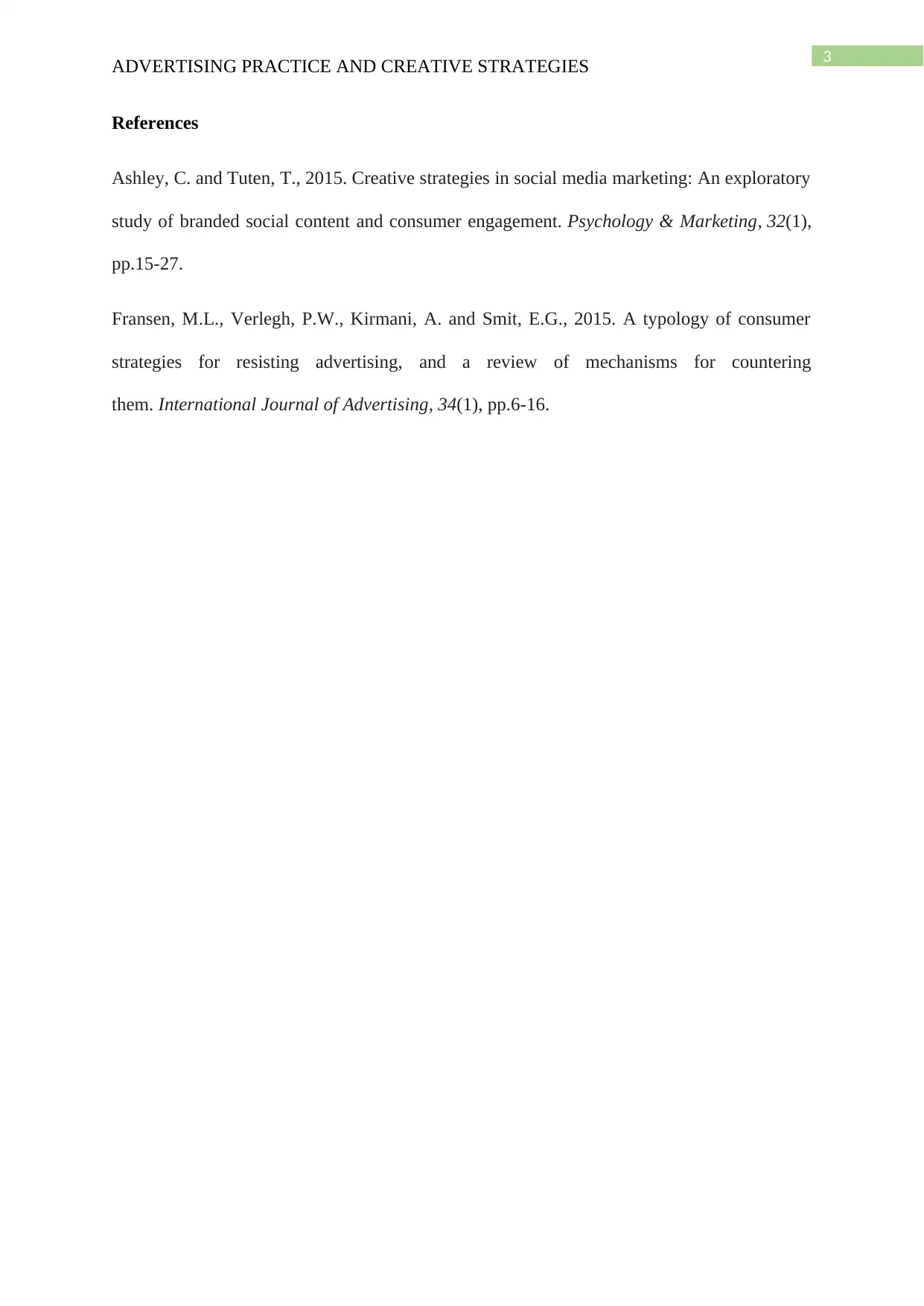
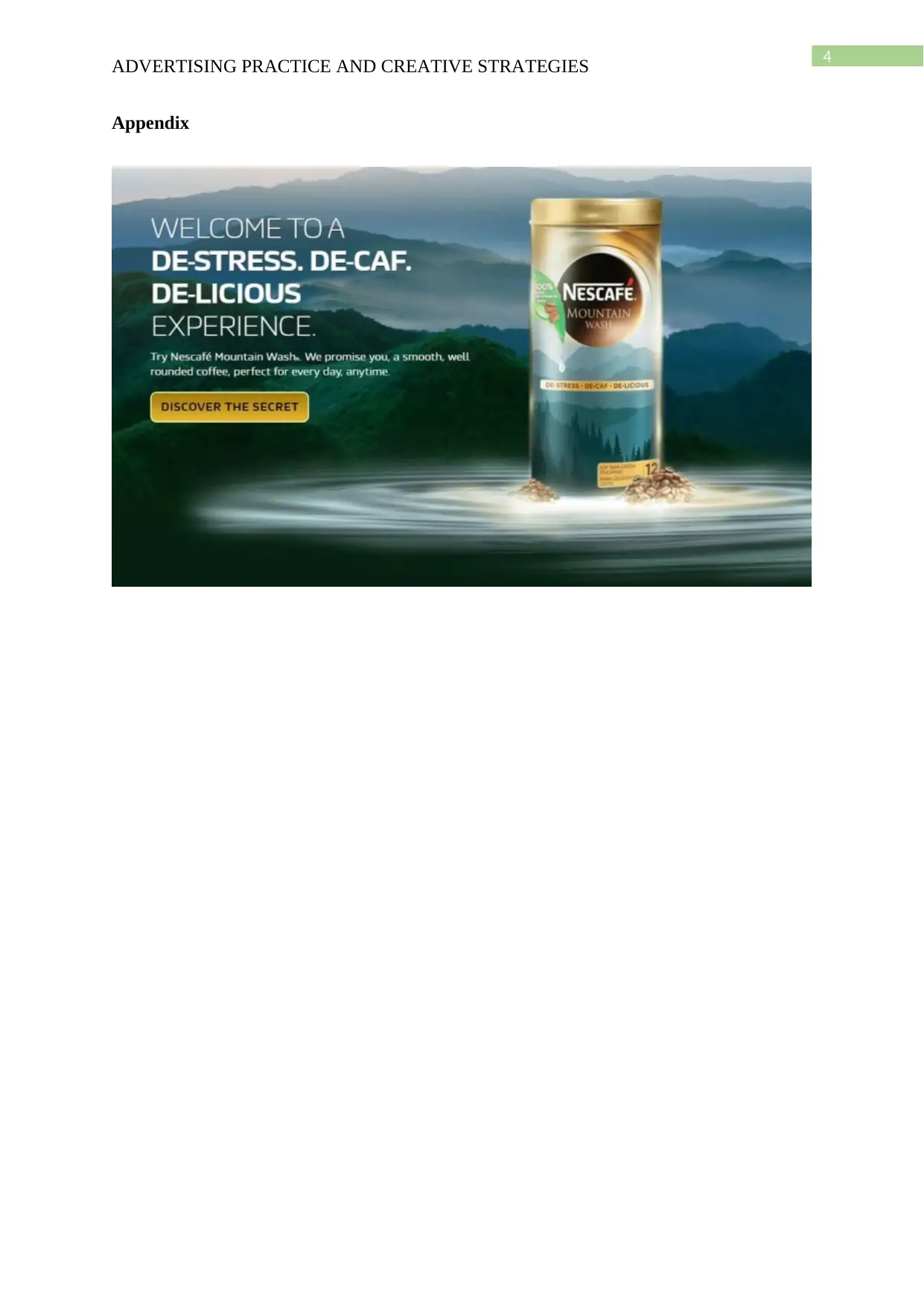
![[object Object]](/_next/static/media/star-bottom.7253800d.svg)